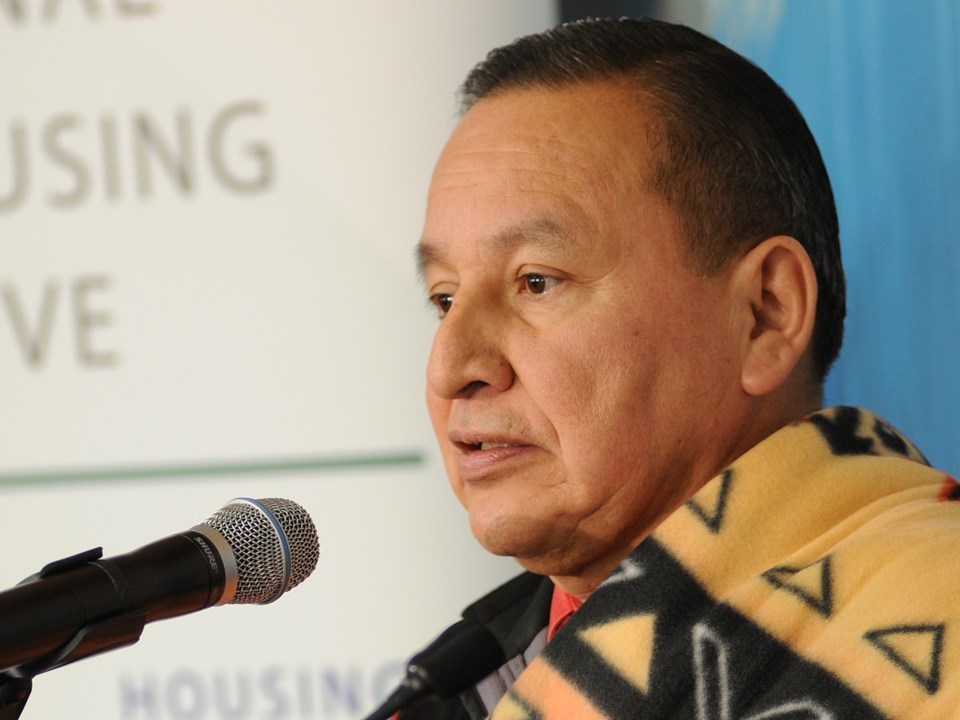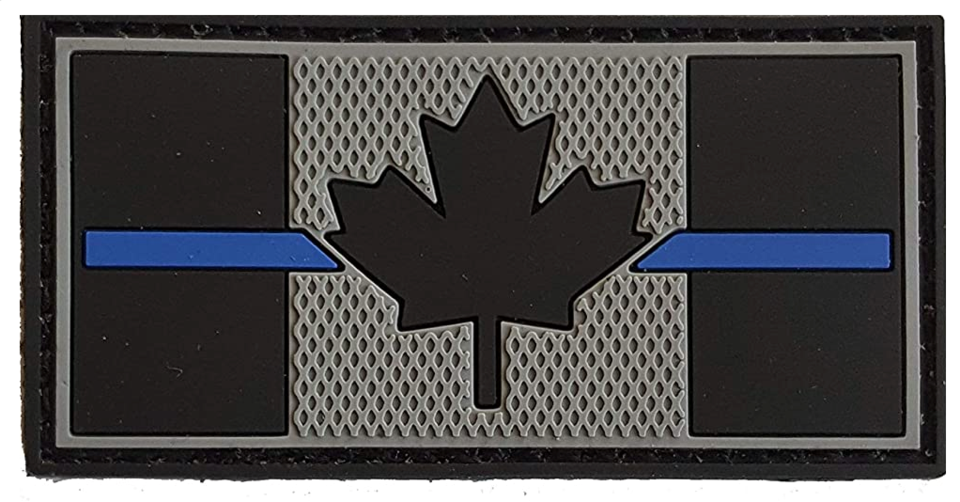A controversial patch worn by some Vancouver cops on their uniforms that a B.C. Indigenous leader says is a symbol of racism was the subject of a formal complaint heard by the Vancouver Police Board Thursday.
The patch, which depicts a Canadian flag with a thin blue line running through it, was worn on the uniform of a Vancouver officer at a downtown protest in November 2021.
A person subsequently filed a written complaint with the Office of the Police Complaint Commissioner.
“There was a white police officer who wore a white supremacist badge [Canadian flag with blue line through it] at a land back rally,” wrote the complainant in a heavily redacted complaint form, which didn’t include the person’s name or further explanation of the allegation.
The police board agreed Thursday (April 21) with a recommendation from Police Chief Adam Palmer to have the department write a report based on the complaint and report back on the history of the patch and why officers wear it.
The report will be used to inform discussions with the BC Association of Police Boards.
“Officers see it as a connection with fallen officers that have been killed in the line of duty, they see service and sacrifice, they see esprit de corps as members of the policing community — the brotherhood, sisterhood, that kind of idea,” Palmer told the board.
“Officers wearing those patches are not wearing them as any kind of show of white supremacy, or anything like that.”
Palmer said “a relatively small number” of Vancouver officers wear the patch.

'Contentious history'
Grand Chief Stewart Phillip, president of the Union of BC Indian Chiefs, said he wants the police board to order Vancouver officers to remove the patches from their uniforms. Phillip said the patch has been widely recognized as a racist symbol and worn by police and citizens at various protests in Canada and the United States.
“Let's be clear here — there's no difference between wearing the thin blue line badge and wearing a swastika on their uniform,” Phillip said Friday by telephone.
“The Vancouver Police Board has a very serious duty of care to deal with this issue in a very decisive and forthright manner immediately.”
The patch has become controversial across Canada, with the Calgary Police Commission deciding in March that the patch worn by officers should be replaced with a symbol “that better reflects the values of Calgarians,” according to a statement posted on the commission’s website.
“Police officers and their families largely wear the thin blue line to honour the fallen, express support for those who serve and recognize the special role that police have in society,” the commission said.
“However, the thin blue line also has a contentious history with roots in division, colonialism and racism, most recently being prominently displayed at counter-protests against the Black Lives Matter movement.”
'Colonial ideals'
The commission pointed out the historical roots of the thin blue line are in “colonial ideals that have caused immense suffering for Canada’s Indigenous peoples and people of colour all around the world.”
The commission said the badge’s origins are based on the “thin red line,” a phrase that came from an 1854 Crimean War battle in which a regiment of Scottish soldiers spread into a thin line to stop an enemy advance.
“While the phrase has been used since to celebrate bravery and professionalism in battle, it also celebrated a colonial military that forcibly took land from Indigenous peoples and people of colour all over the world in the name of spreading and expanding what was seen as a superior European culture,” said the commission, noting a U.S. version of the patch was worn by people at the Unite the Right rally in Charlottesville, Virginia in 2017 and during the U.S. Capitol riot in 2021.
The commission has since agreed not to immediately enforce removal of the patches in order to allow further discussions with Calgary’s two police associations. At the same time, the commission made it clear this month that its decision still stands.
“While the commission’s decision has not changed, it is understood that the road to compliance will take time,” said the commission, which is comprised of 10 community members and two city councillors.
“The commission wants, as much as possible, to try to get buy-in and voluntary compliance before looking at enforcement.”
'Freedom convoy'
Palmer said patches featuring the Canadian flag with a line through it are not uncommon among other agencies tied to public safety.
“The fire department has the same flag but with a red line, the paramedics have the same flag with a white line, dispatchers have the same flag with a gold line,” he said. “There's also one for border protection [officers].”
Both Palmer and Phillip noted how the Canadian flag has been used by citizens involved in the anti-vaccination trucker protest movement across the country.
The flag’s connection to the so-called “freedom convoy” now has people accusing police of representing views of protesters; all Vancouver police uniform shoulder flashes feature the Canadian flag.
“People are complaining now that the Canadian flag and a police officer somehow now represent a sort of a redneck, right-wing ideology — but for goodness sakes, we're talking about the Canadian flag,” said Palmer, noting the Canadian flag on shoulder flashes is standard in policing across the country.
“So if you were to go to Edmonton or Calgary or Winnipeg, or any other big city in Canada, you're going to see the Canadian flag on all of the patches.”
Canadian flag
Phillip said the concerns over the use of the Canadian flag highlight the importance of symbols and how they are perceived by people who wear them on a uniform or promote their use at protests.
“The Canadian flag has been hijacked by white supremacist groups, and that's a very serious issue,” he said. “There was a time in our history when we used the Canadian flag to honour significant events, significant losses of life through disasters and tragedy. Remembrance Day is a prime example.”
Added Phillip: “Now our flag has been tainted by white supremacy. It's got to stop. This is racialized hatred being advanced by incrementalism.”
@Howellings




